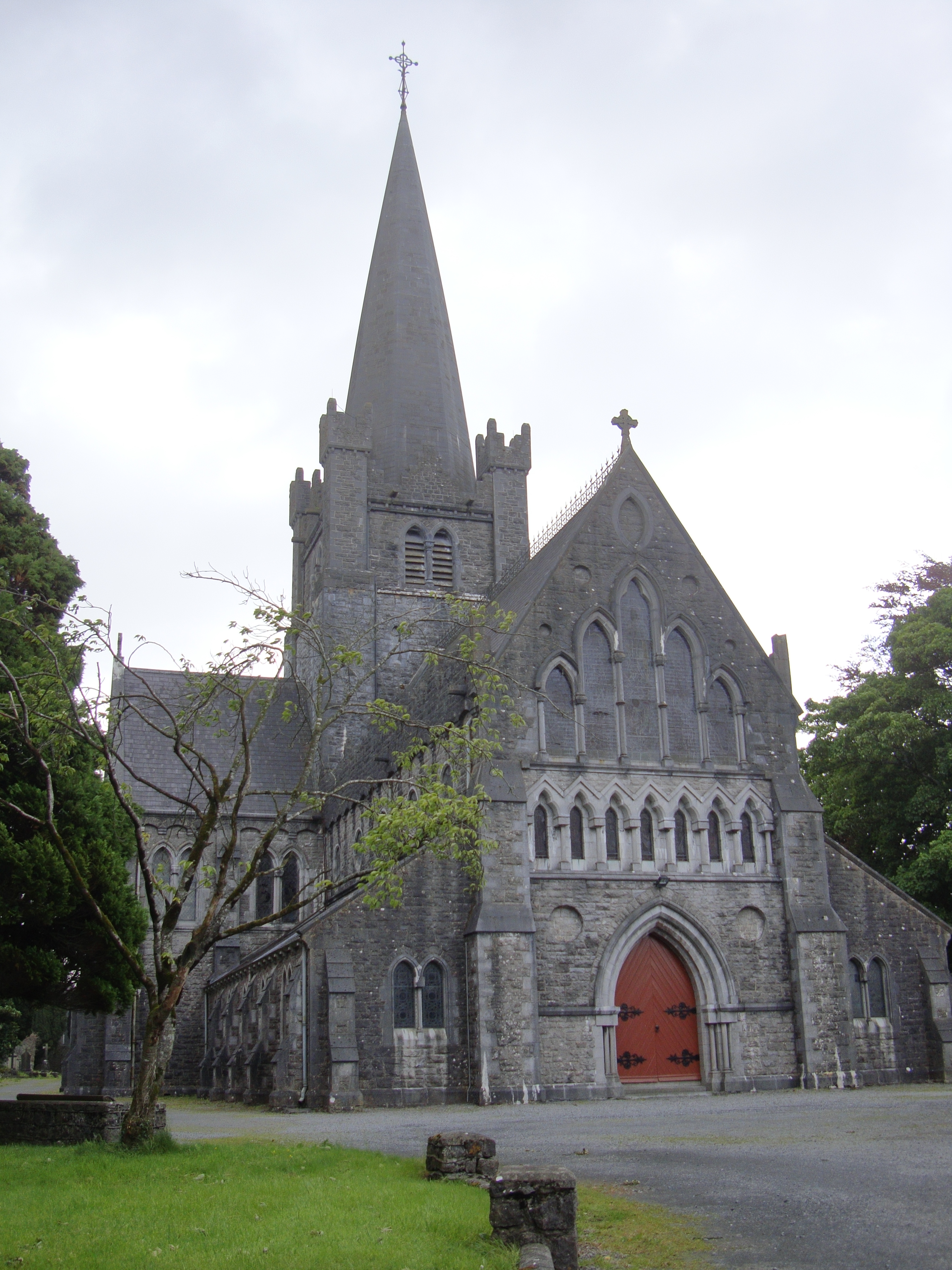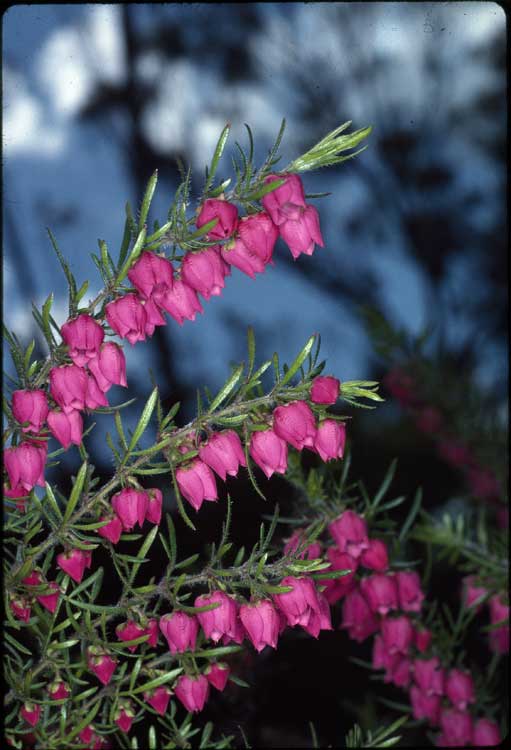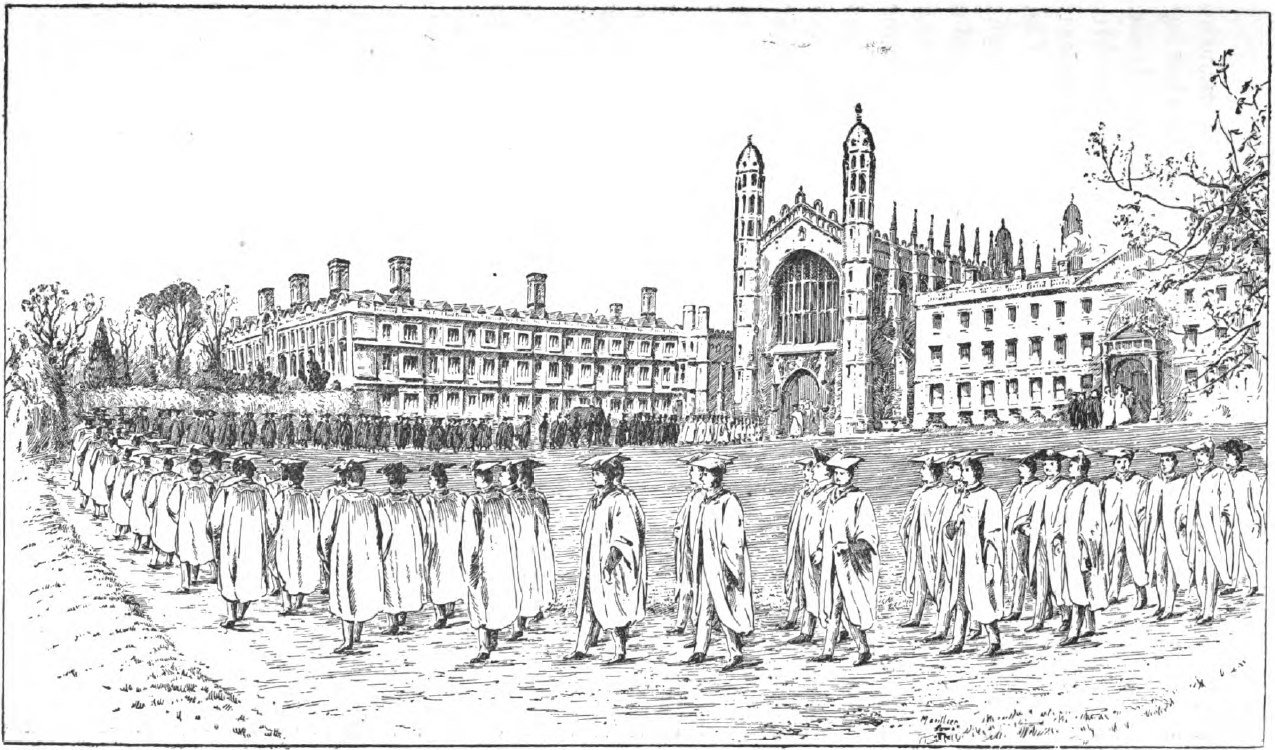|
Mathew Hale (bishop)
Mathew Blagden Hale (18 June 1811 – 3 April 1895), very frequently spelled "Matthew", was the first Anglican Bishop of Perth and then the Anglican Bishop of Brisbane. Hale is recognised for seeking to empower the South Australian Aboriginals through his work in the Poonindie mission, establishing the Anglican Diocese of Perth and Hale School. Early life Mathew Blagden Hale was born on 18 June 1811 at Alderley, Gloucestershire, the third son of Robert H. Blagden Hale (5 May 1780 – 20 December 1855) and Lady Theodosia Hale (née Bourke). His maternal grandfather was The Earl of Mayo, Lord Archbishop of Tuam. After completing his education at Wotton-under-Edge, he attended Trinity College, Cambridge, and obtained his B.A. in 1835 and M.A. in 1838. During his time at Cambridge he met Harold Browne and they became lifelong friends. Both came under the influence of Charles Simeon who celebrated fifty years of evangelical ministry at (Holy) Trinity Church in 1832. The antisl ... [...More Info...] [...Related Items...] OR: [Wikipedia] [Google] [Baidu] |
The Right Reverend
The Right Reverend (abbreviated The Rt Revd, The Rt Rev'd, The Rt Rev.) is a style (manner of address), style applied to certain religion, religious figures. Overview *In the Anglican Communion and the Roman Catholicism in the United Kingdom, Catholic Church in Great Britain, it applies to bishops, except that ''The Most Reverend'' is used for archbishops (elsewhere, all Roman Catholic Church, Catholic bishops are styled as ''The Most Reverend''). *In some churches with a Presbyterian heritage, it applies to the current Moderator of the General Assembly, such as **the current Moderator of the United Church of Canada (if the moderator is an ordained minister; laypeople may be elected moderator, but are not styled Right Reverend) **the current Moderator of the Presbyterian Church in Ireland **the current Moderator of the General Assembly of the Church of Scotland **the current Moderator of the Presbyterian Church of East Africa **the current Moderator of Presbyterian Church of G ... [...More Info...] [...Related Items...] OR: [Wikipedia] [Google] [Baidu] |
Joseph Bourke, 3rd Earl Of Mayo
Joseph Deane Bourke, 3rd Earl of Mayo (; ; 1736 – 20 August 1794) was an Irish peer and cleric who held several high offices in the Church of Ireland including Bishop of Ferns and Leighlin (1772–82) and Archbishop of Tuam (1782–94). Family Bourke was the second son of John Bourke, 1st Earl of Mayo and Mary Deane. In 1760, he married Elizabeth Meade, the daughter of Richard Meade, 3rd Baronet and Catherine Prittie. They had four sons: John Bourke, 4th Earl of Mayo, Richard, Joseph, and George, and six daughters: Catherine, Mary-Elizabeth, Mary-Anne, Charlotte, Louisa, and Theodosia-Eleanor., ''A General and Heraldic Dictionary of the Peerage and Baronetage of the British Empire'', vol. 2, pp. 156–157. Theodosia's son, Matthew Hale, was the first Bishop of Perth and then the Bishop of Brisbane. Ecclesiastical career Prior to his elevation to the episcopate, Bourke's earlier ecclesiastical appointments were Prebendary of Armagh (1760–1768); Dean of Killaloe (1768� ... [...More Info...] [...Related Items...] OR: [Wikipedia] [Google] [Baidu] |
Georgiana Molloy
Georgiana Molloy (23 May 1805 – 8 April 1843) was an early settler in Western Australia, who is remembered as one of the first botanical collectors in the colony. Her husband, John, was involved in the Wonnerup massacre, and she has been the subject of research into how records and family history documents obfuscate the telling of those events. Life Early life and migration Georgiana Molloy was born Georgiana Kennedy in Cumberland on 23 May 1805. In her youth she was caught up in the Christian revival sparked by the preacher Edward Irving but implemented in a milder manner by Rev. Story of Rosneath. She became deeply religious, unusually so, even for the educated classes. She became distant from her own family in both sentiment and geography when she went to stay in Scotland with the Dunlop family at Keppoch House, near Helensburgh. Early in 1829, she accepted a marriage proposal from Captain John Molloy, and they were married on 6 August of that year. Shortly afterwar ... [...More Info...] [...Related Items...] OR: [Wikipedia] [Google] [Baidu] |
John Molloy (Australian Settler)
Captain John Molloy (5 September 1786 – 6 October 1867) was an early Irish settler in Western Australia. He was one of the original settlers of Augusta and an early settler of Busselton. Early life The outline of John Molloy's birth and early life are believed by some to be clear, though there is little detail and published accounts vary greatly. This is just one possible version that he was the same John Molloy who was baptised at St Martin-in-the-Fields in London, on 8 October 1786, the son of William and Mary Molloy. As John celebrated his birthday on 5 September in later life, his birth date may have been 5 September 1786. This William Molloy had a shoe warehouse at 16 High St, St Giles, London. He made his will in 1804, leaving bequests to his son, John, and his daughter, Susanna, who were to inherit their shares of the estate when they reached the age of 21. The will also stipulates regular payments from the estate to William Molloy's mother, who was living in King ... [...More Info...] [...Related Items...] OR: [Wikipedia] [Google] [Baidu] |
Bishop Short
Augustus Short (11 June 1802 – 5 October 1883) was the first Anglican bishop of Adelaide, South Australia. Early life and career Born at Bickham House, near Exeter, Devon, England, the third son of Charles Short, a London barrister, offspring of an old English county family, and his wife Grace,Dirk van Dissel,Short, Augustus (1802 - 1883), '' Australian Dictionary of Biography'', Vol. 6, MUP, 1976, pp 122-123. retrieved 20 January 2010 daughter of Humphrey Millett. Short was educated at Westminster School and Christ Church, Oxford, where he received first-class honours in classics and graduated with a Master of Arts in 1826 and D. D. 1847. Short took orders in the Church of England as deacon in 1826 and priest in 1827 and in the same year accepted the curacy of Culham, near Abingdon, Oxfordshire. In 1829 he resigned to become a tutor and lecturer in his old college; one of his students was William Ewart Gladstone. In March 1833 he was appointed public examiner in th ... [...More Info...] [...Related Items...] OR: [Wikipedia] [Google] [Baidu] |
Atworth
Atworth is a village and civil parish in west Wiltshire, England. The village is on the A365 road between Melksham and Box, about northwest of Melksham and northeast of Bradford on Avon. The hamlet of Purlpit lies east of Atworth village, and in the south of the parish are the small village of Great Chalfield and the hamlet of Little Chalfield. The Roman road from Silchester to Bath forms the northern boundary of the parish, and to the south of it is the settlement of Beardwell. History The present-day civil parish of Atworth was created in 1884 from four former parishes or tithings. Atworth Atworth was a tithing in the northeast of the large ancient parish of Bradford on Avon. This land forms the northern half of the modern parish, with the Roman road from Silchester to Bath as its northern boundary. A Roman villa (excavated in 1937 and 1971) was a short distance northwest of the present village of Atworth. Poplar Farmhouse is from the 15th century and Manor Farmhouse is fr ... [...More Info...] [...Related Items...] OR: [Wikipedia] [Google] [Baidu] |
Stroud
Stroud is a market town and civil parish in Gloucestershire, England. It is the main town in Stroud District. The town's population was 13,500 in 2021. Below the western escarpment of the Cotswold Hills, at the meeting point of the Five Valleys, the town is noted for its steep streets. The Cotswold Area of Outstanding Natural Beauty surrounds the town, and the Cotswold Way path passes by it to the west. It lies south of the city of Gloucester, south-southwest of Cheltenham, west-northwest of Cirencester and north-east of the city of Bristol. London is east-southeast of Stroud and the Welsh border at Whitebrook, Monmouthshire, is to the west. Not part of the town itself, the civil parishes of Rodborough and Cainscross form part of Stroud's urban area. Stroud acts as a centre for surrounding villages and market towns including Amberley, Bisley, Bussage, Chalford, Dursley, Eastcombe, Eastington, King's Stanley, Leonard Stanley, Minchinhampton, Nailsworth, Oakri ... [...More Info...] [...Related Items...] OR: [Wikipedia] [Google] [Baidu] |
Tresham
Tresham is a village in Gloucestershire, England. It was transferred back from the county of Avon in 1991, having been in Gloucestershire before 1972. It is now in Stroud District, and forms part of the civil parish of Hillesley and Tresham. It is on the Monarch's Way and near the Cotswold Way (). According to Pevsner, Tresham Church dates from about 1855. Burden Court Farm was originally the home of Charles II's Lord Chief Justice Sir Matthew Hale Sir Matthew Hale (1 November 1609 – 25 December 1676) was an influential English barrister, judge and jurist most noted for his treatise ''Historia Placitorum Coronæ'', or ''The History of the Pleas of the Crown''. Born to a barrister and ... (1609–76). It was later the home of Lord (Jack) and Lady (Frances) Donaldson. External links Villages in Gloucestershire Stroud District {{Gloucestershire-geo-stub ... [...More Info...] [...Related Items...] OR: [Wikipedia] [Google] [Baidu] |
Bishop Of Gloucester
The Bishop of Gloucester is the ordinary of the Church of England Diocese of Gloucester in the Province of Canterbury. The diocese covers the County of Gloucestershire and part of the County of Worcestershire. The see's centre of governance is the City of Gloucester where the bishop's chair (''cathedra'') is located in the Cathedral Church of the Holy and Indivisible Trinity. The bishop's residence is Bishopscourt, Gloucester; very near the Cathedral. The office has been in existence since the foundation of the see in 1541 under King Henry VIII from part of the Diocese of Worcester. On 5 August 2014, Martyn Snow, the suffragan Bishop of Tewkesbury, became acting bishop of Gloucester.Diocese of Gloucester – Letter from the Bishop of Tewkesbury (Accessed 7 ... [...More Info...] [...Related Items...] OR: [Wikipedia] [Google] [Baidu] |
William Wilberforce
William Wilberforce (24 August 175929 July 1833) was a British politician, philanthropist and leader of the movement to abolish the slave trade. A native of Kingston upon Hull, Yorkshire, he began his political career in 1780, eventually becoming an independent Member of Parliament (MP) for Yorkshire (1784–1812). In 1785, he became an evangelical Christian, which resulted in major changes to his lifestyle and a lifelong concern for reform. In 1787, Wilberforce came into contact with Thomas Clarkson and a group of activists against the slave trade, including Granville Sharp, Hannah More and Charles Middleton. They persuaded Wilberforce to take on the cause of abolition, and he soon became the leading English abolitionist. He headed the parliamentary campaign against the British Slave Trade for 20 years until the passage of the Slave Trade Act of 1807. Wilberforce was convinced of the importance of religion, morality and education. He championed causes and campaigns such as t ... [...More Info...] [...Related Items...] OR: [Wikipedia] [Google] [Baidu] |
Charles Simeon
Charles Simeon (24 September 1759 – 13 November 1836) was an English evangelical Anglican cleric. Life and career He was born at Reading, Berkshire, in 1759 and baptised at St Laurence's parish church on 24 October of that year. He was the fourth and youngest son of Richard Simeon (died 1784) and Elizabeth Hutton. His eldest brother, named Richard after their father, died early. His second brother, John, entered the legal profession, became an MP and received a baronetcy. The third brother, Edward Simeon, was a director of the Bank of England. Simeon was educated at Eton College and King's College, Cambridge. As an undergraduate at King's from 1779, brought up in the high church tradition, he read ''The Whole Duty of Man'' and then a work by Thomas Wilson on the sacrament, and taking communion at Easter experienced a Christian conversion. In 1782 he became fellow of King's College and was ordained deacon. He graduated B.A. in 1783 and, in the same year, was ordained a prie ... [...More Info...] [...Related Items...] OR: [Wikipedia] [Google] [Baidu] |
Harold Browne
Edward Harold Browne (usually called Harold Browne; 6 March 1811 – 18 December 1891) was a bishop of the Church of England. Early life and education Browne was born on 6 March 1811 at Aylesbury, Buckinghamshire, the second son of Robert Browne of Morton House in Buckinghamshire, and of Sarah Dorothea Steward; and younger brother to Thomas Gore Browne. He was educated at Eton College and Emmanuel College, Cambridge. After securing his BA in 1832, he won the Crosse theological scholarship in 1833, the Tyrwhitt Hebrew scholarship in 1834, and the Norrisian prize in 1835. He graduated with his MA in 1836, was elected fellow of Emmanuel in 1837, and appointed senior tutor in 1838. In 1854 he was elected Norrisian Professor of Divinity at Cambridge. He took the BD in 1855 and the DD in 1864. Early career Browne was ordained deacon on 26 November 1836 by Joseph Allen, Bishop of Ely; and priest, again by Allen, on 3 December 1837. In 1841, he accepted a curacy in Exet ... [...More Info...] [...Related Items...] OR: [Wikipedia] [Google] [Baidu] |






